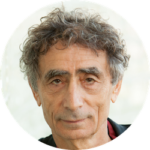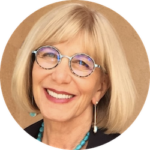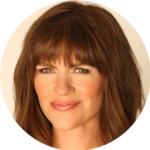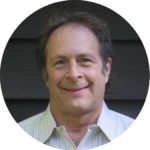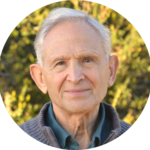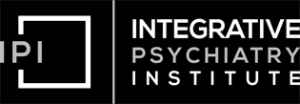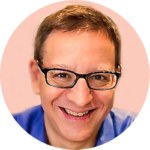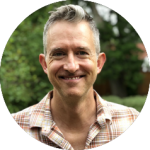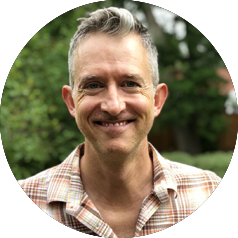Trauma and Hope in Iran – Dr. Noshene Ranjbar (PART 1) – HPP 126
The tragic death of Mahsa Amini, a 22-year-old woman who died in Iran’s capital of Tehran while in police custody on September 16, 2022, has sparked outrage and protests in Iran and all over the world. In this 2-part series, we sit down with Dr. Noshene Ranjbar, trauma expert and Associate Clinical Professor of Psychiatry at the University of Arizona, to discuss both the trauma and hope surrounding the fight for freedom in Iran.
Show Notes:
The Story Behind Mahsa Amini – 2:34
And then she ended up in the hospital bed, somebody happened to take a photo of her and share it with the world. And she died while in custody in the intensive care unit, after having been hit. And her brain getting damaged, that a traumatic brain injury, multiple hits to the head, losing consciousness going into a coma and then dying.
A Massive Public Outcry – 9:25
So then the children in the schools started coming out and saying, We want human rights. We don’t want to live in a dictatorship. We want to have a future. And the world is watching and saying like, what happened? Where were they for the past 43 years? And sometimes it takes one more atrocity. When the story is shared, when they’re relatable, when the humanity of it is so, at just the right time and just the right moment and just the right story and it can touch all of us.
The Unveiling of Trauma and Hope – 12:00
And what I mean is for the truth, to be revealed, for the voices to be heard, for the healing to have the opportunity to begin, because when trauma is hidden, from sight, when the stories aren’t told, when people are not empowered enough to share their voice, there is no end to what trauma can do to destroy a body and mind, a soul, a community, a family, population, a culture, village, a world a planet. And to witness, the unveiling of trauma means that there is hope.
Connecting to Ancestral Roots – 16:06
And as long as they’re silenced, or not attended to and continue to suffer from the diseases and the conditions that have been trauma induced, then we all lose out, you know, and they have taught me so much about healing and about connecting to my own roots, I remember meeting with the very first native people in the US, and they said, tell us more about where you come from, connect with your own culture, speak your own language, you know, and that’s how they taught me to learn about trauma. Because I was like, Oh, my gosh, I’m going to support this population with their trauma, let me take a look at my own, because I’ve got plenty of it in my ancestry.
Center for Mind-Body Medicine Trainings – 20:13
And it’s a pretty intensive and involved process, because working with trauma does require skill building and supervision and mentorship and a lot of support, care for the caregivers. So that has evolved over time. And then of course, the Mahsa revolution starts and here we are, with, you know, 60 to 80 people in Iran, who are going through these trainings are actively delivering groups and workshops to women, to young people, to older people and so now we get to scale it because another one of those things where you couldn’t have planned this, like this is really the work of spirit where, you know, one thing leads to another and then you just happen to be in the right time in the right place when a need arises.
Full Episode Transcript
SPEAKERS
Dr. Will Van Derveer, Dr. Noshene E. Ranjbar
Dr. Noshene E. Ranjbar 00:00
And so even about very small things like somebody wearing makeup or nail polish like that could set off for no reason for them to apprehend you and, you know, say some really awful negative disparaging remarks and make you fix it or take you into custody if you don’t do what they asked you to do immediately.
Dr. Will Van Derveer 00:26
Thank you for joining us for the Higher Practice Podcast. I’m Dr. Will Van Derveer with Keith Kurlander. And this is the Podcast where we explore what it takes to achieve optimal mental health. Today, we are blessed to have a conversation with Iranian American psychiatrist and friend, Noshene Ranjbar about what is happening in Iran and what we can do about it. Noshene was born in Iran two years before the dictatorship there took power in 1979. Noshene is a dear friend and colleague whom we’ve been fortunate to get to know through our work together teaching folks integrative psychiatry. Today we explore Dr. Ranjbar’s work with the Center for mind body medicine, delivering training in self regulation and trauma awareness for people in Iran, providing support for the revolution that’s occurring there. Hello, Noshene, welcome to the show.
Dr. Noshene E. Ranjbar 01:37
Hello, Will. I am delighted and honored to be here. Thank you for having me.
Dr. Will Van Derveer 01:43
It’s so wonderful to have you. And I’ve been looking forward to this conversation for a while now. And it’s very tender. It’s very tender. And our focus today is on what’s happening in Iran, and with the women of Iran. And I wonder, there may be people listening who don’t know what’s going on. So I wonder if we could start with maybe a little bit of an overview of what’s been going on in the past couple of months over there. And maybe even if you want to give a bigger context, that’d be great, too.
Dr. Noshene E. Ranjbar 02:19
Absolutely. So greetings to everyone who’s watching and listening, and for hearing what I have to say, as an Iranian American woman living in America for the past, Gosh, 33 years. So as most of you probably already know, the Islamic Republic of Iran, which is the current government, has been in power since 1979. So about 43 years, I know that really well because that was two when 1979 happened. And it’s more or less been a dictatorship, under the guise of religion, but really not honoring any religious or spiritual values. So it has been extremely oppressive to women, to children, to people of minority, other religious beliefs, to gender and sexuality, minorities, too much influence or connection to the outside world. So in many ways, the society has been forced to be closed and to continue to get poorer and more divided, and more hopeless, and more devoid or disconnected from the richness of culture and land and all the beauty that is Persia, has been for 1000s of years. So oppression and human rights violations have not been a new thing. However, a couple of months ago, it just so happened this is where I almost get goosebumps even thinking about how phases and processes of life and world have a life of their own. So a couple of months ago, this young 22 year old woman, Mahsa Amini, was from an indigenous tribal community, Kurdiztan, Sanandaj, Saqez as the name of the very small town that she and her beautiful family lived in. And she won a trip to the big city of Tehran with her big brother. And so they decided to take a trip and see the world, you know, the city world, and they got there and somehow the two of them were apprehended by the morality police. There’s this morality police that in my mind is like the immorality police like they don’t do anything moral as a police force. But anyway, they’re called the morality police and they apprehend people whose hair is showing if they’re a woman, or if they’re dressed inappropriately according to the regime’s guidelines. And so even about very small things, like somebody’s wearing makeup or nail polish like that could set off for no reason for them to apprehend you. And, you know, say some really awful negative disparaging remarks and make you fix it or take you into custody if you don’t do what they asked you to do immediately. So she and her brother got apprehended and they took her in by force. And then the next thing we knew was, you know, her brother, of course, worried as to where she was going. And then for a period of time, there was, nobody knew where she was. And then she ended up in the hospital bed, somebody happened to take a photo of her and share it with the world. And she died while in custody in the intensive care unit, after having been hit. And her brain getting damaged, that a traumatic brain injury, multiple hits to the head, losing consciousness going into a coma and then dying. So this event, and her hijab we’re covering was actually much better than a lot of other people walking around. Because over the past 43 years, everyone has tried to find ways to live a little, you know, so whether it means showing a little bit of hair, or having a little bit of makeup, or, you know, trying to have a god forbid boyfriend or girlfriend or you know, significant other or the street to hold hands with. But hers was actually relatively conservative, you know, she just had a little bit of hair showing under her scarf. And so when this happened to this innocent indigenous Kurdish girl, and it happened in such a short period of time, and there was somebody who took a picture and told the story, that all of a sudden, there was this backlash, appropriate backlash of anger and frustration and rage from everyone, not just her family, but the entire city that she was from, and then other cities and other people. So it’s almost like, I like to use that analogy of a balloon, it’s like it keeps getting bigger and bigger and bigger. And then there’s one little needle that makes it burst. And it’s as if the entire fabric of Iran, and those outside more and more the innocence, the authenticity of this young woman’s story, murder, and what happened to her has made everyone just about wake up and say this is not okay. And so this has led to protests and people coming out in the streets and seeking justice, not just for her, but because there is a connection and relatability to master. And Master story, as if each one of us wants to live a little, breathe a little, be able to take a trip, be able to be treated as any human, any child, any mother, any father would like their kids to be. And it has created a revolution. And at first it was mostly women who are like, we’re all Massa, we, you know, we all stand up with her. And then it was all the young men rising up and saying, she’s just like our sister. She’s just like, you know, our significant other, she’s just like our mother, you know, is. So it’s just this beautiful movement of speaking up for something so simple. And then there’s been backlash from the government. So the protests and what is now being referred to as the new Iranian revolution is being met with more deaths, more murders.
Dr. Will Van Derveer 09:22
Several hundred at this point, from what I’ve heard.
Dr. Noshene E. Ranjbar 09:25
Including children. So then the children in the schools started coming out and saying, We want human rights. We don’t want to live in a dictatorship. We want to have a future. And the world is watching and saying like, what happened? Where were they for the past 43 years? And sometimes it takes one more atrocity. When the story is shared, when they’re relatable, when the humanity of it is so, at just the right time and just the right moment and just the right story and it can touch all of us. I can definitely say for myself, my life will never be the same again. Because of Mahsa.
Dr. Will Van Derveer 10:14
Thank you for the eloquent summary of a massive amount of history and present. I’m wondering if you could share a little bit of what it’s like for you as, as a physician, and as a trauma may be fair to say, truma, maybe not trauma specialist, but maybe that is the right term for you. I mean, I think we all are, who are working with anything in mental health, right? What’s it like to see people in your country of origin in this fight for decency, really, is what it sounds like to me on a fundamental level of human freedom to experience a decent life.
Dr. Noshene E. Ranjbar 10:58
Well, you know, I didn’t specialize in trauma, for any reason, other than the fact that I’m a survivor myself. And there’s something so beautiful and powerful about trauma, it is an opportunity for rebirth. And so the hope for transformation is the reason as many of us have survived. And I’ve made it to the other side. And so, as a psychiatrist, as a Iranian American woman living outside of Iran for the past 33 years, it is awe inspiring. It is humbling, because perhaps it’s something I had secretly hoped and prayed for, to come to pass at some point before, it’s my time to leave this world. And what I mean is for the truth, to be revealed, for the voices to be heard, for the healing to have the opportunity to begin, because when trauma is hidden, from sight, when the stories aren’t told, when people are not empowered enough to share their voice, there is no end to what trauma can do to destroy a body and mind, a soul, a community, a family, population, a culture, village, a world a planet. And to witness, the unveiling of trauma means that there is hope. It’s like the top of the curve is like that needs to happen. And then the rest is sharing more connecting, finding the resources, bringing the world together to meet the needs, just like we’ve seen, you know, whether it’s Ukraine, or Gaza, or 911, or you know, name the trauma of the day. But when that happens, that’s when I feel exhilarated that there’s a hope for all of us. Yeah, so not to say I mean, I, when it first started, I felt all emotions, I felt anger, rage, grief, you know, tears, rolling fear for my family, for my friends, for people, I’m helping train in Iran, you know, for my own future possibility of ever being able to return. So all of those feelings were there. And then little by little, as the voices cut out, as the stories got out as support from England, to Germany, to Toronto, to LA to New York, you know, started to come out, then there was this awe almost watching a baby be born, you know, like, maybe we all are witnessing something so precious, so historical, that it’s not just for Iranians, that it’s one example of what can happen when we all come together to hear voices that have been silenced for a long time.
Dr. Will Van Derveer 14:16
Wow, so there’s a there’s a galvanizing and recognizing the shared humanity, and the shared value of having a life where you can hope for or you can see the possibility for your fullest expression, rather than living underneath the weight of oppression and human rights violations and the whole nine yards of that, that I think anyone can relate to.
Dr. Noshene E. Ranjbar 14:43
Yeah, you know, and it’s, for me, the other part that is like, I can’t even get my mind around it. But most of my work in trauma over the past 13, 14 years has been with Native American and indigenous communities in the US. So, I hadn’t really been very much in touch at all with my Iranian people heritage, I couldn’t even speak the language very well up until a few months ago. And what the similarities speaking of how this is not just for one people or one place, as I see something very similar to what I’ve been learning from the native and the indigenous people is that they are a powerhouse of culture, of richness of wisdom, of ceremony, of ritual of music, of community, of grounded strength, as thousands of tribes, most unrecognized, a lot of them have not had the chance to survive the genocides, you know, so we have a few left, and their strength and their culture, their wisdom has the capacity to help so many people, if and when they can find their voice, they can fully, you know, heal and embody the heritage, the beauty that they have, then everyone will benefit. And as long as they’re silenced, or not attended to and continue to suffer from the diseases and the conditions that have been trauma induced, then we all lose out, you know, and they have taught me so much about healing and about connecting to my own roots, I remember meeting with the very first native people in the US, and they said, tell us more about where you come from, connect with your own culture, speak your own language, you know, and that’s how they taught me to learn about trauma. Because I was like, Oh, my gosh, I’m going to support this population with their trauma, let me take a look at my own, because I’ve got plenty of it in my ancestry. And that’s the same thing I see in a place like Iran is that there are the steps of poetry and culture and music and rugs, and language that has basically been hidden from all of humanity, more or less. Many pictures we see are of all the bad stuff that’s occurring in the Middle East. And yet, that beauty has the capacity to enliven and enrich, you know, many people on this planet, if and when it is allowed to come out the other side. That’s a win for all potentially, or a loss for all the other side.
Dr. Will Van Derveer 17:37
Tell us a little more about your training in Iran? And are you speaking about the Center for mind body medicine and training that way, or I’d love to hear more about what you’re up to there?
Dr. Noshene E. Ranjbar 17:53
Sure, yes. So my work in Iran is currently through the Center for mind body medicine, 5013 C in Washington DC based out of there, and initially founded by Dr. James Gordon, some 30 years ago, and, you know, CNBM, for short, have been doing global trauma relief, population wide programs all along in Kosovo and Gaza, and Haiti and South Sudan and Syria and Jordan, Kazakhstan and Kyrgyzstan and Turkmenistan, you name it. And they do that well. Because it’s not easy work. As you can imagine.
Dr. Will Van Derveer 18:36
Yeah.
Dr. Noshene E. Ranjbar 18:37
But the blessing is that COVID allowed for all the programming which used to be in person, you know, go to a community, train 50, 100, 200 people and then supervise them by phone from afar until they get to a place where they can hold circles and workshops and kind of be empowered to take care of their own community using these techniques and skills was all turned virtual, as with everything else, and for the first time, they were able to have a more global training where people from any country could come as long as the timezone was not too limiting for you know, where they were living. So in 2021, we had our first global training with a couple of 100 people from all over the world, Ireland, India, China, Iran, South Sudan, Mozambique, etc. Portugal. It’s a beautiful mix. I’ve never seen that level of diversity in one of the Centers for mind-body medicine, training, and so forty Iranians were able to show up because we had grant funding and they were medical students and nurses and therapists and social workers and school teachers, and I didn’t know them before. But they showed up out of the woodwork as these grassroots efforts happened, you know, different people invited different folks who they knew might be interested in beginning this training process. And it’s a pretty intensive and involved process, because working with trauma does require skill building and supervision and mentorship and a lot of support, care for the caregivers. So that has evolved over time. And then of course, the Mahsa revolution starts and here we are, with, you know, 60 to 80 people in Iran, who are going through these trainings are actively delivering groups and workshops to women, to young people, to older people and so now we get to scale it because another one of those things where you couldn’t have planned this, like this is really the work of spirit where, you know, one thing leads to another and then you just happen to be in the right time in the right place when a need arises. And there is nothing in the world I’d rather be doing than supporting my fellow country people to support each other and maybe I will get to go visit them someday and celebrate with others.
Dr. Will Van Derveer 21:20
I hope so. Maybe so. Yeah, wow. We look forward to connecting with you again on the next episode of the Higher Practice Podcast where we explore what it takes to achieve optimal mental health.







